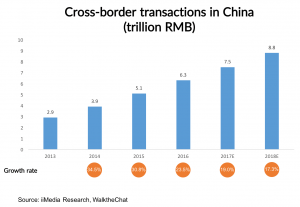Recently, I participated in a Clubhouse discussion, it was my first and I was surprised to be invited to be part of the panel. After the discussion, one of the hosts asked my impressions. “It was interesting, we covered a lot of different ideas. But I wish we could have gotten into a few things much more deeply.”
She responded, “I know what you say, but no one wants to get deep into these ideas. They prefer going through a lot of things at a very high level.”
I reflected on her words, recognizing that we experience the same thing in so much of what we do. Where we should be having deeper engagement and conversations, we never dive into the details. The sound bites have become more important than the substance, and few have the desire to get any deeper.
Reflect on emerging trends in how we communicate and learn. We’ve, for decades, seen the “sound bite” emerge as a primary form of communication. It’s not new, but the evolution of our attention spans is alarming. A Microsoft research report shows our attention span declining from about 12 seconds in 2000 to 8.25 seconds in 2015 (and additional research shows it at about 8 seconds in 2020). Even goldfish have greater attention spans than people at 9 seconds.
In addition to declining attention spans, we are more forgetful; stated differently our retention of data and facts is declining.
It’s easy to understand how this is happens, we are pummeled with information and interruptions in everything we do. Whether it’s emails, phone calls, text messages, alerts that pop up on our screens, colleagues at work (this has changed a little since WFH), social media. We are both interrupted and we interrupt ourselves (44% of the time).
Various social media platforms limit how much we can engage–Twitter limits us to 240 characters, TikTok limits us to 60 seconds. All the forcing factors are to less time on any one thing to enable more volume of things.
We have long recognized the challenges with our shorter attention spans. We adjust our communications, moving from written to audio and video–to try and get more attention/time. We adjust our communications to this new reality. We shorten our content, we move from “pages,” to paragraphs, to sentences, to phrases, to a couple of “high impact” words.
It’s a two way problem–the people we are trying to engage and communicate with, have shorter attention spans and we struggle to communicate. But we, also, have shorter attention spans, and miss a lot of what people are trying to communicate to us.
So we find ourselves in races to maximize the impact of what little attention we can get. Some of our technique is to “shout” more loudly. Some is to increase the volume and quantity. Some is to increase the channels through which we are trying to capture attention. Some is to take more extreme/provocative positions, which can lead to polarization.
Too often, to address the problem of shortening attention spans, we aggravate it by continuing to compress communications and adopting techniques to communicate more in less time or communicating less in less time.
But there’s a problem with this, a problem for all of us–consumers of information, providers of information. We live in worlds of increasing complexity. Short attention spans are the enemy of dealing with complexity. We need to focus, we need to spend time, we need to do deep dives into greater detail. We need to invest our time in probing, learning, understanding. We need to focus on “deep learning.”
How do we do this in a world where our attention spans are decreasing and the number of things demanding our attention are skyrocketing?
There are endless articles with tips on managing interruptions and improving our attention. Limiting social media time, time/task blocking, mindfulness, habit creation and hundreds of other techniques are things that we can use, personally, to improve our focus and attention spans. We do this with varying degrees of success.
But what about those people whose attention we are trying to capture? We can’t ask them to limit social media time–particularly when our outreach is through social media. We can’t suggest the block time to talk to us, we haven’t even captured the 8 second of their time to suggest that and we need more time to get them to justify it.
It’s hard enough to do this as sales people engaging trying to engage customers in deeper/high impact conversations.
But as we move, increasingly, to digital engagement, how do we capture more of our customers time for deep learning?
I’m not sure I know the answers, but perhaps there are places we can look. What is capturing people’s attention now? What can we learn from these and apply to our own digital and personal outreach?
For example, what causes people to binge watch series on NetFlix, Prime, YouTube, and other channels (Through the pandemic, I’ve found myself binge watching more series in the evenings). What is it about gaming platforms that capture people’s attention for hours? What is it about certain hobbies that cause people to focus, uninterrupted for long periods of time? What is it about sports/games that cause us to pay attention–either as participants or observers?
As we are trying to engage our customers, I don’t think the answer is to cater to the shorter attention spans, trying to compress our messages into a few provocative words. I think we need to study those things that capture people’s attention, learning from them and leveraging them in our engagement strategies.
As we figure out how to capture more time for deeper learning from our customers, we have to make sure we are doing the same with ourselves and our people.
Business & Finance Articles on Business 2 Community
(33)
Report Post








